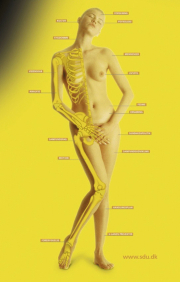By Professor Evelyne de Leeuw | Published 29 August 2022
About ten years ago, I found myself appointed the first professor in a newly established School of Medicine. And not just that! I wasn’t a clinician or biomedical researcher... I was a public health type with no patient experience whatsoever. My subjects were (and are) cities.
The task that I had signed up to was to train a generation of medical graduates that could live, love and dream public and population health as the core of their work.
How did I get that challenge thrown in my lap? Well – the reason for the establishment of that new medical school was that the lobbyists had convinced the politicians that they knew how to solve the dearth of medical practitioners in rural, regional and remote Australia.
The truth is, of course, that you need to recruit students from rural, regional and remote Australia in order to let them travel back to practice in rural, regional and remote Australia. The same is, blatantly, true for Indigenous health, by the way. You can only fix the gap by investing in Indigenous practitioners (and not just medics, of course).
Anyway – I had to come up with a somewhat stronger evidence base for a radically different, and definitely more challenging, public health teaching and development programme. I quickly found that health service delivery outside cities is more often than not a community and multi-professional effort. And not just in the sense that we’d need to frame more significant Inter-Professional Education (which we did, with nurses, OTs, and many others from the academic environment). No – delivery of health services ‘out there’ involves Elders, police(wo)men, teachers, shop keepers, fire volunteers, and many more. Clinical medical training far from prepares you for those exciting workplaces! ‘The New Public Health’ was to be the answer.
And this wasn’t classical public health training! Traditionally, public health folk hinge their identities on biostatistics and epidemiology, if you are lucky on some policy and planning perspectives, hopefully some international (often confused with global) health, and rarely community health dimensions such as advocacy, empowerment, and social science.
I faced three challenges: (1) identify a cutting edge set of evidence based public health deliverables for a medical curriculum; (2) manage full integration of these deliverables into that curriculum; and (3) avoid public health becoming marginalised once the clinicians deploy their heroics.
Reflecting on the Sisyphean boulder I was to push uphill, I realised a couple of things. First, I needed to figure out why public health is not generally seen as the central tenet of medicine, but rather as a sickly orphan (in spite of lofty pronouncements to the contrary). Second, if I was to change this, what would be the parameters for a public health curriculum? And third – shock, horror, and a mind-blowing realisation – that in spite of a career in curriculum development, I had not wholly appreciated the scholarship of teaching. I had been teaching scholarship, sure, but how to think about teaching and its (social; organisational; power-driven) parameters was an entire different kettle of fish!
What I discovered from the literature was that if you want to make public health a central tenet of a medical curriculum I would have to position it as follows:
- It needs to be taught all the time, from day one when students arrive to the last day in clinical placements;
- It needs to be taught in regular hours, not the graveyard shifts (Monday morning at 7, or Friday night at 8);
- It needs to be compulsory, and never an elective;
- It needs to be rigorously assessed against clear outcome measures;
- Those assessments must have consequences: if you don’t pass ‘public health’ you won’t pass medicine…
- And ultimately: each curricular element must be ‘owned’ by a significant proportion of students – that is, the programme must be driven by the values that you try to instil in the teaching and the various student cohorts.
Did I succeed?
Hm, yes initially I did: I negotiated (1)-(5) pretty well, and the fact that this happened in a start-up institution did help. (6) was to happen over time, and we did put in some great effort to help students reflect on their new medical persona. But what I failed to do is recognise the vast and long arm of the medical-industrial complex – and the fact that you can well negotiate a beautiful ideal, but that resourcing that ideal is the only way to sustain it.
This article was written by Professor Evelyne de Leeuw, Director of the HUE (Healthy Urban Environments) Collaboratory, Faculty of Medicine & Health
